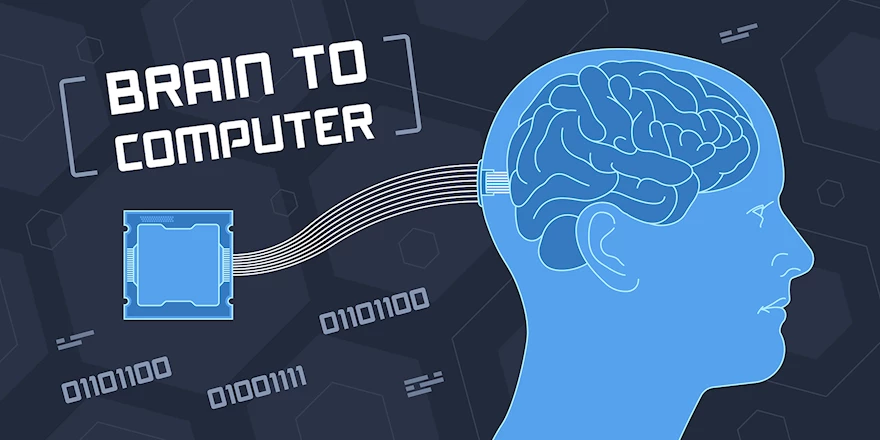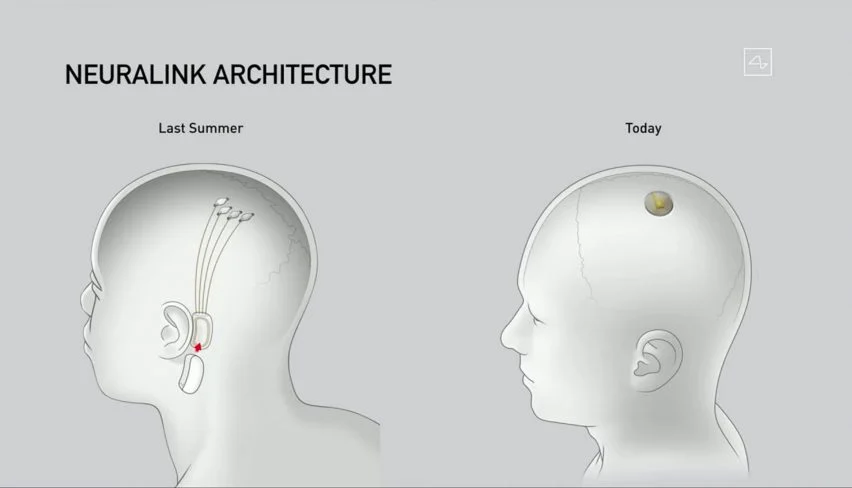Neuralink: Exploring the Key Facts of Elon Musk’s Brain Implant Technology
In recent years, the world has witnessed groundbreaking advancements in the field of neuroscience, pushing the boundaries of what we thought was possible. One such revolutionary development is Neuralink, a brain implant technology pioneered by the enigmatic entrepreneur Elon Musk. With Neuralink, Musk aims to merge the human brain with artificial intelligence, unlocking a new realm of possibilities for human cognition and interaction. This futuristic concept has captured the imagination of scientists, technologists, and the public alike, as it holds the potential to transform the way we understand and harness the power of our minds. Join us as we delve into the key facts of Neuralink, exploring the frontiers of this awe-inspiring technology and its implications for the future of humanity.
The Vision of Neuralink

Neuralink, a revolutionary venture founded by Elon Musk, envisions a future where humans merge with artificial intelligence through advanced brain implant technology. The primary goal of Neuralink is to develop a high-bandwidth brain-computer interface that enables seamless communication between the human brain and external devices. By leveraging the power of neural interfaces, Neuralink aims to enhance human capabilities, treat neurological disorders, and ultimately achieve symbiosis with AI.
Elon Musk envisions a future where individuals can overcome the limitations of the human brain, allowing for enhanced cognition, memory augmentation, and even the potential to upload and download information directly from the brain. This ambitious vision opens up exciting possibilities for human-machine integration and has the potential to transform the way we interact with technology and unlock the mysteries of the human mind.
How Neuralink Works?
Neuralink aims to create a seamless connection between the human brain and external devices through the use of advanced brain implant technology. The key concept behind Neuralink’s work is the development of tiny, flexible electrodes, known as “threads,” that are implanted into the brain using a minimally invasive surgical procedure.
These threads, thinner than human hair, are capable of monitoring and stimulating neural activity with high precision. The implantation process involves placing these threads into specific regions of the brain, targeting areas associated with various functions and cognitive abilities. The threads are connected to a small device called the “Link,” which is positioned behind the ear. The Link acts as a hub, wirelessly transmitting and receiving signals between the brain and external devices, such as computers or smartphones. This allows for bidirectional communication, where information can be sent to the brain and neural signals can be read and decoded.
The neural signals captured by the threads are processed and interpreted using sophisticated algorithms, enabling the extraction of valuable information from the brain. This data can be utilized for various purposes, including diagnosing and treating neurological disorders, restoring motor function in individuals with paralysis, and potentially even enhancing cognitive abilities through direct brain-machine interfaces.
The Goals and Applications of Neuralink
Here are some of the key goals and potential applications of Neuralink:

- Medical Treatments: One of the primary objectives of Neuralink is to revolutionize the field of medical treatments for neurological disorders. By directly interfacing with the brain, Neuralink aims to develop therapies for conditions like Parkinson’s disease, epilepsy, depression, and spinal cord injuries. The technology has the potential to restore lost motor functions, alleviate symptoms, and improve the quality of life for individuals suffering from these conditions.
- Brain-Computer Interfaces (BCIs): Neuralink aims to create advanced brain-computer interfaces that allow individuals to control external devices using their thoughts. This can have significant implications for people with paralysis, enabling them to regain control over their movements and interact with the world more effectively. BCIs could also provide new avenues for communication for individuals with severe speech or motor impairments.
- Augmented Cognitive Abilities: Neuralink envisions the possibility of enhancing human cognitive abilities through direct brain-machine interfaces. By establishing a seamless connection between the brain and artificial intelligence systems, individuals could potentially access vast amounts of information, learn new skills more quickly, and expand their cognitive capabilities.
- Understanding the Brain: Neuralink’s technology could contribute to a deeper understanding of the brain and how it functions. By collecting and analyzing neural data from a large number of individuals, Neuralink aims to unravel the mysteries of the brain and gain insights into how our thoughts, emotions, and behaviors are encoded in neural activity.
- Future Adaptation to AI: Elon Musk has expressed concerns about the potential risks associated with artificial intelligence (AI). Neuralink could potentially play a role in ensuring a safe integration between humans and AI systems by creating interfaces that facilitate seamless communication and cooperation between humans and intelligent machines.
Implanting Neuralink
Here is an overview of how Neuralink is implanted:
- Surgery: Implanting Neuralink requires a surgical procedure. A small incision is made in the scalp, and a small device containing electrodes is inserted into the brain. The surgery is performed with precision and care to minimize any potential damage or discomfort.
- Electrode Placement: The electrodes of Neuralink are strategically placed in specific regions of the brain to target the desired neural activity. The placement depends on the specific application, such as motor control or sensory feedback.
- Wiring and Connectivity: Once the electrodes are in place, thin wires are connected from the implanted device to a small computer chip, which is typically positioned behind the ear or on the skull. This chip acts as the central hub for data processing and communication.
- Wireless Communication: Neuralink utilizes wireless communication to transmit data between the implanted device and external devices. This allows for seamless interaction without the need for physical connections.
- Neural Data Collection: The implanted electrodes detect and record neural activity in real-time. This data is then processed by the chip, which translates it into meaningful information that can be used for various applications.
- External Devices: Neuralink can interface with external devices, such as smartphones or computers, to enable control or communication. This allows individuals to interact with technology using their thoughts or receive sensory feedback from external sources.
- Calibration and Training: After the implantation, the system undergoes a calibration and training phase. This involves mapping the neural signals to specific actions or functions and fine-tuning the system to optimize its performance for each individual.
Potential Benefits and Challenges of Neuralink
Benefits:
- Restoring Neural Function: Neuralink has the potential to restore lost neural function in individuals with neurological disorders, such as paralysis, by establishing a direct connection between the brain and external devices. This could significantly improve their quality of life and independence.
- Enhancing Cognitive Abilities: With further advancements, Neuralink could potentially enhance cognitive abilities, memory, and learning. It may open up new avenues for individuals to augment their mental capacities and improve their overall cognitive performance.
- Treating Mental Health Conditions: Neuralink’s precise neural interface may offer new possibilities for treating mental health conditions, such as depression, anxiety, or obsessive-compulsive disorder. It could enable targeted stimulation or modulation of specific brain regions to alleviate symptoms.
- Advancing Brain-Machine Interfaces: Neuralink’s technology can contribute to the development of advanced brain-machine interfaces, enabling seamless communication and control between the human brain and external devices. This could revolutionize fields such as prosthetics, virtual reality, and robotics.
Challenges:
- Surgical Risks: The implantation process of Neuralink involves brain surgery, which carries inherent risks. Ensuring the safety and effectiveness of the procedure, minimizing infection rates, and avoiding damage to vital brain regions are crucial challenges that need to be addressed.
- Long-Term Reliability: Maintaining the long-term reliability and functionality of neural implants is a challenge. The implants should be able to withstand the physiological environment of the brain, avoid degradation over time, and maintain stable connections for optimal performance.
- Ethical Considerations: Neuralink raises ethical questions regarding privacy, consent, cognitive enhancements, and potential impacts on personal identity. Striking a balance between technological advancements and ethical principles is essential to ensure responsible and equitable use of the technology.
- Accessibility and Affordability: The widespread adoption of Neuralink may face challenges related to accessibility and affordability. Ensuring that the technology is accessible to individuals from diverse backgrounds and making it affordable for those who could benefit from it are important considerations.
- Regulatory and Legal Frameworks: Developing appropriate regulatory frameworks and legal guidelines for Neuralink is crucial to address safety, privacy, and ethical concerns. Establishing clear guidelines on research, deployment, and potential commercial applications will be necessary to ensure responsible development and use of the technology.
The Future of Neuralink
The future of Neuralink holds immense potential in revolutionizing various aspects of human life. With continued advancements and research, Neuralink aims to enhance brain-machine interfaces and open up new possibilities for human cognition and interaction with technology.
One potential future application of Neuralink is the restoration of lost sensory or motor functions in individuals with neurological disorders or injuries. By bridging the gap between the brain and external devices, Neuralink could enable paralyzed individuals to regain mobility or allow those with impaired sensory perception to regain their senses. Another exciting prospect is the potential enhancement of human capabilities through direct neural interfaces. This could lead to improved memory, cognitive abilities, and learning processes. Imagine the ability to upload and download information directly to and from the brain or seamlessly communicate with others through thought-based interfaces.
Moreover, Neuralink could pave the way for advancements in neuroscientific research and understanding. By gathering vast amounts of neural data from consenting individuals, researchers can gain valuable insights into brain function, potentially leading to breakthroughs in treating neurological disorders and mental health conditions.
Overall, the future of Neuralink holds immense potential in transforming human capabilities and advancing our understanding of the brain. With careful considerations and responsible development, Neuralink could shape a future where humans can seamlessly interact with technology and unlock new dimensions of human potential. Like this post? Don’t forget to check out our other short stories in our Quick Read section

